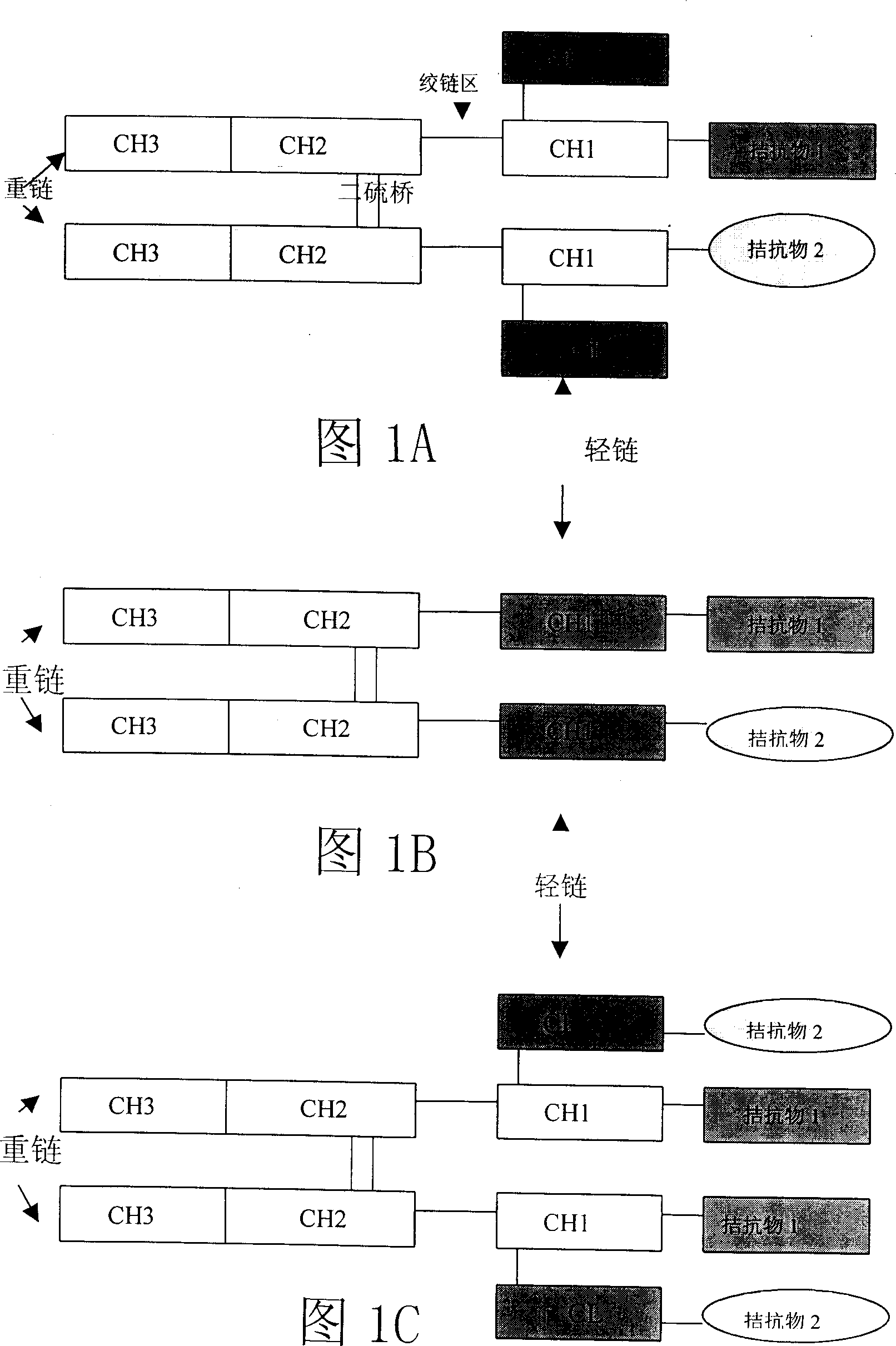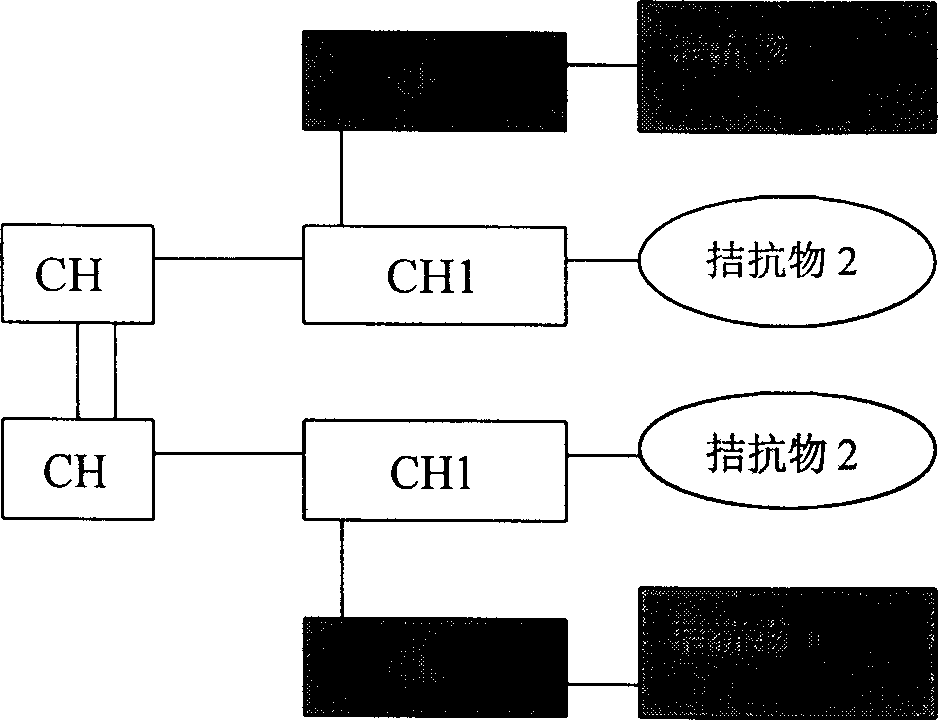Long-acting broad-spectrum chemotactic factor receptor inhibiting matter
A chemokine receptor and inhibitor technology, applied in the field of chimeric protein compounds, can solve the problems of unselectable inhibition range, specificity but not broad spectrum, instability, etc.
- Summary
- Abstract
- Description
- Claims
- Application Information
AI Technical Summary
Problems solved by technology
Method used
Image
Examples
Embodiment 12
[0084] The application of the long-acting broad-spectrum chemokine receptor inhibitor of the present invention:
[0085] The invention includes the use of these chimeric proteins or their gene fragments (DNA, RNA). a). As a drug used in clinical treatment, a large number of published research results have proved that chemokine proteins and their receptors play an important role in the pathological process of many diseases. Studies have also found that many diseases involve a variety of different chemokine receptors. For example, AIDS virus infection, allogeneic organ transplant rejection, metastasis of certain tumor cells, various autoimmune diseases, non-specific inflammatory diseases (see above). There are many other diseases not listed here. The chimeric protein invented here overcomes the diversity and complexity of disease pathology due to its ability to efficiently inhibit a variety of different chemokine receptors. At the same time, because the chimeric protein has a...
Embodiment 1
[0094] In order to facilitate the understanding of the present invention, some specific embodiments of the present invention are listed below. Example 1 Gene Recombination of Chimeric Protein XR4 / R5 / R1
[0095] The cDNAs (including leader sequences) of the chemokines SDF-1 and RANTES were obtained from human tissue RNA by RT-PCR. The cDNA was cloned into PCR2.1 vector. The genetic mutation of the chemokine is used to modify the gene of the chemokine to form another nucleic acid sequence. On the other hand, the cDNA of the heavy chain constant region of human immunoglobulin IgG4 was obtained from the cDNA library of human spleen using the published sequence, and this fragment was inserted into the expression vector (here, a modified pCR3.1 vector pHC, using CMV as a promoter, EU as an enhancer, and neomycin insensitive gene as a selection marker). The 3' ends of the above-mentioned genetically engineered RANTES sequence fragment and the transformed SDF-1 sequence fragment we...
Embodiment 2
[0097] Example 2 Gene Recombination of Chimeric Protein XR4 / R7
[0098] The gene of chemokine MIP-3β was obtained from human tissue cDNA library by PCR method, and cloned into PCR2.1 vector. It is transformed into a new nucleic acid sequence by gene mutation method. On the other hand, the cDNA fragment of the heavy chain constant region of human immunoglobulin IgG1 (obtained from the human spleen cDNA library using the published sequence) was incorporated into the expression vector (the vector pHC was used here, and the CMV is the promoter, EU is the enhancer, and the neomycin insensitive gene is the selection marker). The 3' end of the genetically engineered MIP-3β sequence fragment and the SDF-1 sequence fragment were respectively connected to the 5' end of IgGγ1 through an enzyme cut point. In addition, an expression vector for the constant region fragment of the human immunoglobulin light chain kappa was made, as in Example 1. Example 3 Expression of chimeric protein XR...
PUM
 Login to View More
Login to View More Abstract
Description
Claims
Application Information
 Login to View More
Login to View More - R&D
- Intellectual Property
- Life Sciences
- Materials
- Tech Scout
- Unparalleled Data Quality
- Higher Quality Content
- 60% Fewer Hallucinations
Browse by: Latest US Patents, China's latest patents, Technical Efficacy Thesaurus, Application Domain, Technology Topic, Popular Technical Reports.
© 2025 PatSnap. All rights reserved.Legal|Privacy policy|Modern Slavery Act Transparency Statement|Sitemap|About US| Contact US: help@patsnap.com



